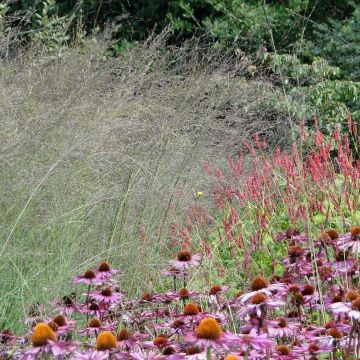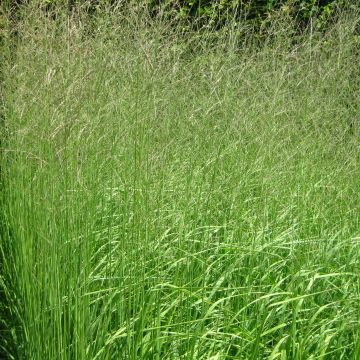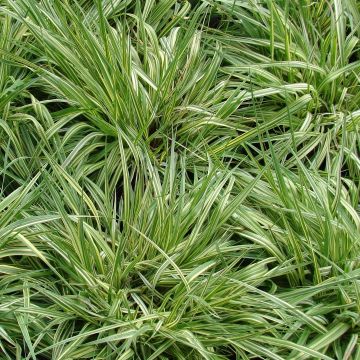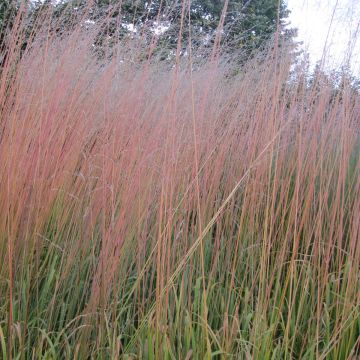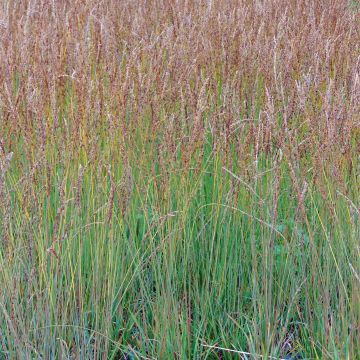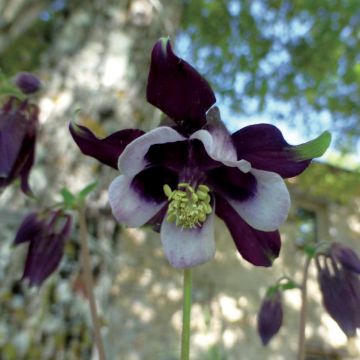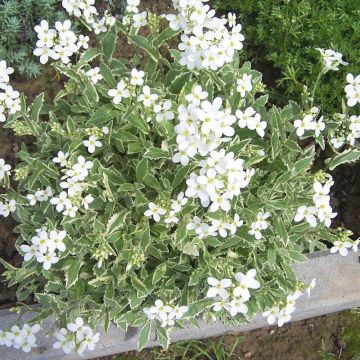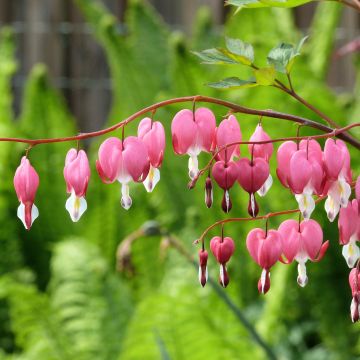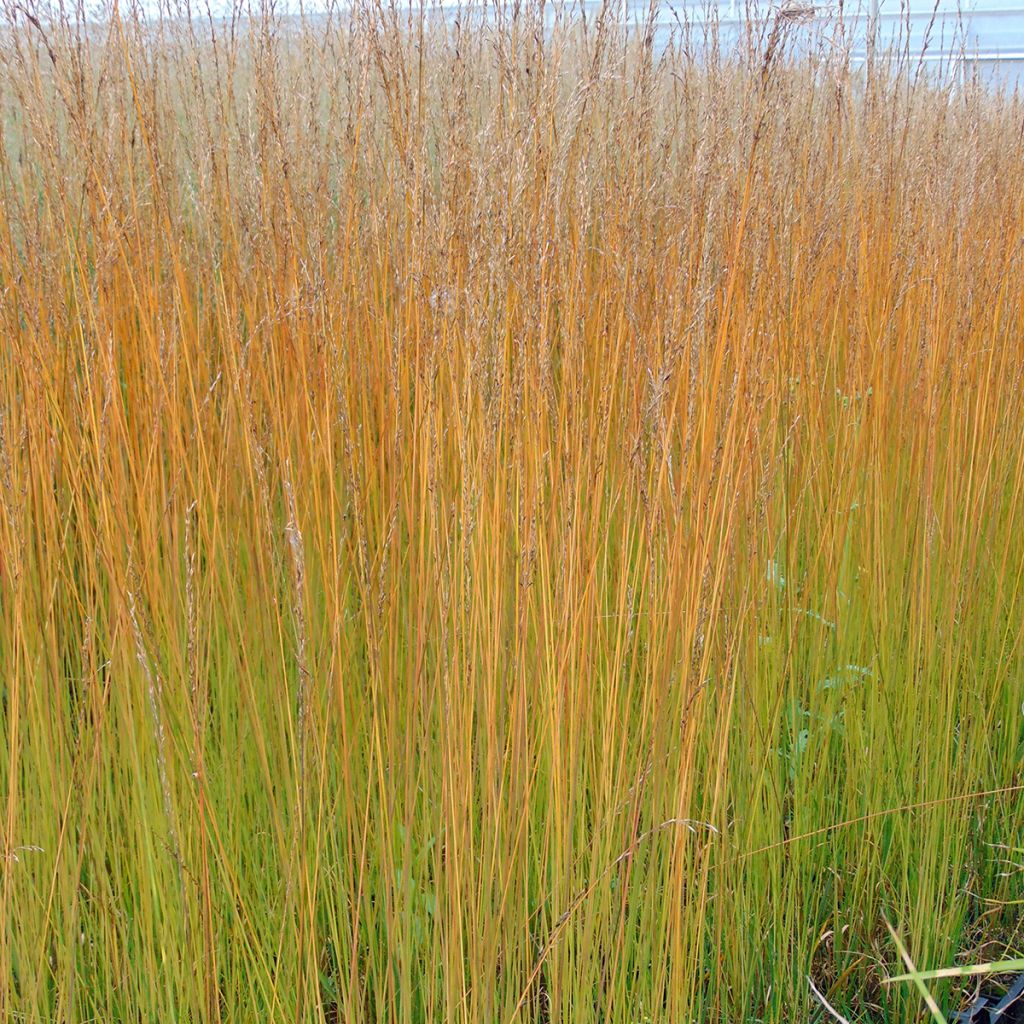

Molinia caerulea Edith Dudszus - Purple Moor-grass
Molinia caerulea Edith Dudszus - Purple Moor-grass
Molinia caerulea Edith Dudszus
Purple Moor-grass, Moor Grass
This item cannot be shipped to the selected country
Delivery charge from €5.90
Delivery charge from €5.90
More information
Schedule delivery date,
and select date in basket
This plant carries a 12 months recovery warranty
More information
We guarantee the quality of our plants for a full growing cycle, and will replace at our expense any plant that fails to recover under normal climatic and planting conditions.
From €5.90 for pickup delivery and €6.90 for home delivery
Express home delivery from €8.90.
From €5.90 for pickup delivery and €6.90 for home delivery
Express home delivery from €8.90.

Does this plant fit my garden?
Set up your Plantfit profile →
Description
Molinia caerulea 'Edith Dudszus', also known as Blue Moor Grass or Purple Moor Grass, is a grass with great ornamental value. It forms a tight clump of fine foliage adorned with brown spikelets carried by long black stems. It is particularly graceful when the autumn wind tousles its blonde hair. Native to acidic and windswept heathlands, it embodies both charm and solidity. Thriving in sunny locations, it adapts to dry or waterlogged soils, even those with limestone, and provides structure to flower beds in winter, when frost takes hold of its swollen base and its dark flowering.
Native to Northern Europe, Southwest and North Asia, Siberia, Turkey, and the Caucasus, Molinia caerulea belongs to the Poaceae family. It owes its species name to the blue reflections that characterise its foliage.
'Edith Dudszus' displays particularly interesting flowering. This perennial forms a tall clump that is somewhat stiff but graceful, reaching a height of 45cm (18in) for the foliage and 90cm (35in) when in bloom, with a spread of 30cm (12in). It bears thin, flat leaves, which are bluish-green in summer, turning blonde in autumn. The blonde leaves remain throughout winter. In late summer, tall and sturdy stems rise above the foliage, carrying panicles of dark purple-brown, feathery spikelets that remain interesting in winter. At maturity, the stems are almost black, and the spikelets dry well before winter. Vegetation starts late in spring.
The 'Edith Dudszus' moor grass is a sculptural 'herb', with harmonious yet distinct architecture. Its presence is strong, and its charm is subtle and wild. For a beautiful effect in a natural garden, plant it en masse, as a small hedge, in a contemporary or rustic garden. This grass can tolerate occasional drought, allowing it to be featured in rock gardens alongside cotton lavenders and wormwoods. It will also find its place not far from water points, where it will contribute to stabilising banks, alongside other grasses, druses, gunneras, or sedges.
Report an error about the product description
Molinia caerulea Edith Dudszus - Purple Moor-grass in pictures
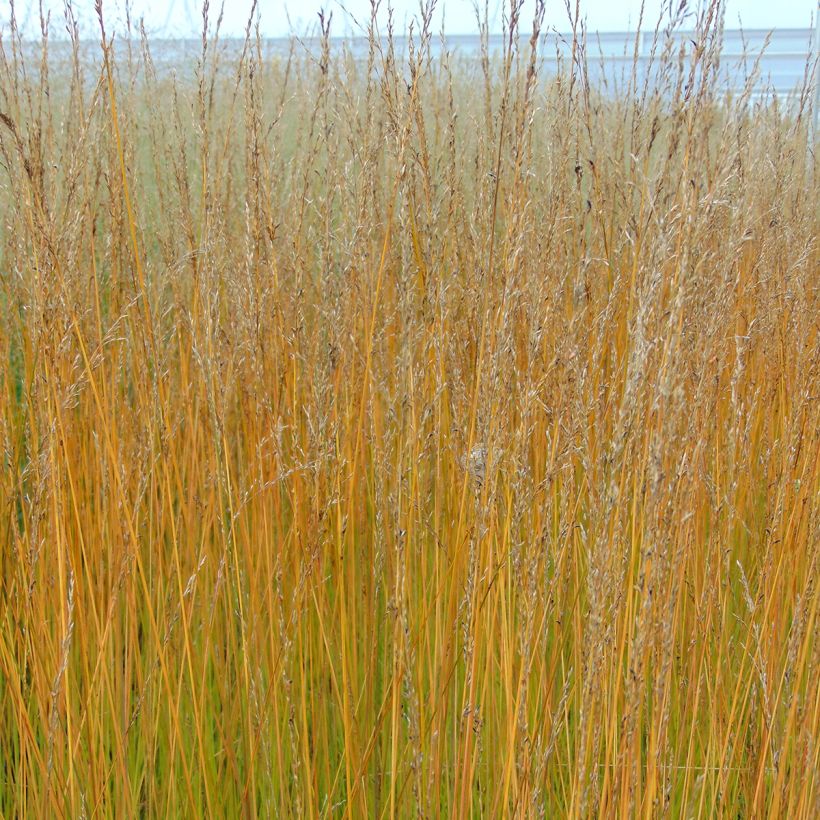

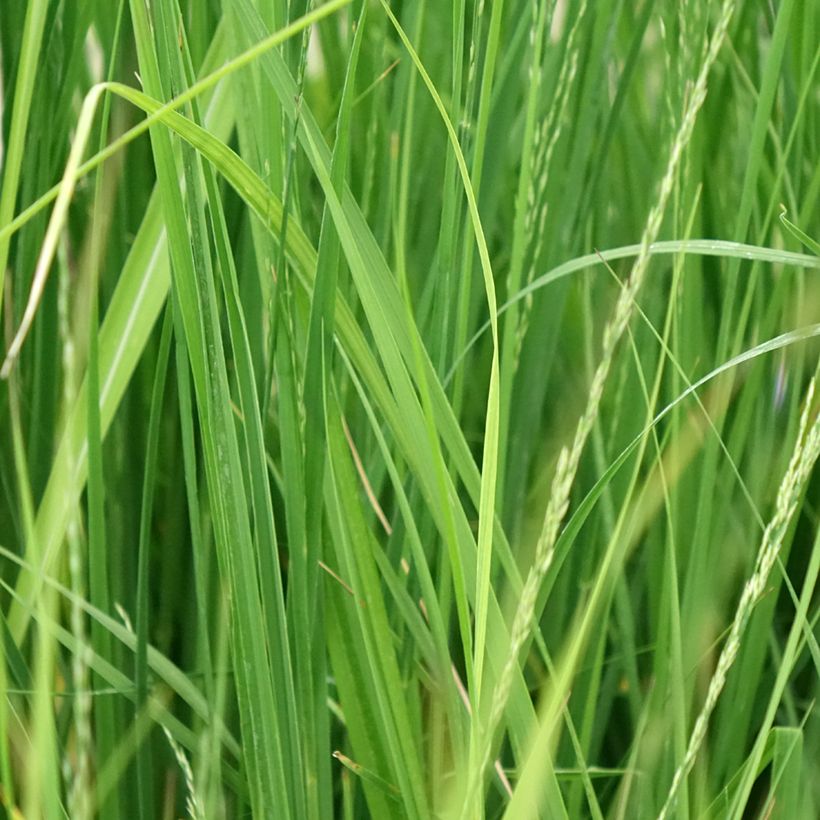

Flowering
Foliage
Plant habit
Botanical data
Molinia
caerulea
Edith Dudszus
Poaceae
Purple Moor-grass, Moor Grass
Cultivar or hybrid
Other Molinia
Planting and care
Molinia caerulea 'Edith Dudszus' adapts to all types of soil, provided they are well-drained and not too chalky. It prefers moist soils in summer, but tolerates periods of moderate drought, as well as waterlogged soils during the growing season. This makes it an easy grass to cultivate and succeed with. Plant it in a sunny position, or at most in partial shade. Plant when all risk of frost has passed. Water abundantly at planting. Avoid excessive fertiliser inputs. Remove damaged foliage during the growing season and trim the clump at the end of winter, just before the start of new growth.
Planting period
Intended location
Care
-
, onOrder confirmed
Reply from on Promesse de fleurs
Foolproof perennials
Haven't found what you were looking for?
Hardiness is the lowest winter temperature a plant can endure without suffering serious damage or even dying. However, hardiness is affected by location (a sheltered area, such as a patio), protection (winter cover) and soil type (hardiness is improved by well-drained soil).

Photo Sharing Terms & Conditions
In order to encourage gardeners to interact and share their experiences, Promesse de fleurs offers various media enabling content to be uploaded onto its Site - in particular via the ‘Photo sharing’ module.
The User agrees to refrain from:
- Posting any content that is illegal, prejudicial, insulting, racist, inciteful to hatred, revisionist, contrary to public decency, that infringes on privacy or on the privacy rights of third parties, in particular the publicity rights of persons and goods, intellectual property rights, or the right to privacy.
- Submitting content on behalf of a third party;
- Impersonate the identity of a third party and/or publish any personal information about a third party;
In general, the User undertakes to refrain from any unethical behaviour.
All Content (in particular text, comments, files, images, photos, videos, creative works, etc.), which may be subject to property or intellectual property rights, image or other private rights, shall remain the property of the User, subject to the limited rights granted by the terms of the licence granted by Promesse de fleurs as stated below. Users are at liberty to publish or not to publish such Content on the Site, notably via the ‘Photo Sharing’ facility, and accept that this Content shall be made public and freely accessible, notably on the Internet.
Users further acknowledge, undertake to have ,and guarantee that they hold all necessary rights and permissions to publish such material on the Site, in particular with regard to the legislation in force pertaining to any privacy, property, intellectual property, image, or contractual rights, or rights of any other nature. By publishing such Content on the Site, Users acknowledge accepting full liability as publishers of the Content within the meaning of the law, and grant Promesse de fleurs, free of charge, an inclusive, worldwide licence for the said Content for the entire duration of its publication, including all reproduction, representation, up/downloading, displaying, performing, transmission, and storage rights.
Users also grant permission for their name to be linked to the Content and accept that this link may not always be made available.
By engaging in posting material, Users consent to their Content becoming automatically accessible on the Internet, in particular on other sites and/or blogs and/or web pages of the Promesse de fleurs site, including in particular social pages and the Promesse de fleurs catalogue.
Users may secure the removal of entrusted content free of charge by issuing a simple request via our contact form.
The flowering period indicated on our website applies to countries and regions located in USDA zone 8 (France, the United Kingdom, Ireland, the Netherlands, etc.)
It will vary according to where you live:
- In zones 9 to 10 (Italy, Spain, Greece, etc.), flowering will occur about 2 to 4 weeks earlier.
- In zones 6 to 7 (Germany, Poland, Slovenia, and lower mountainous regions), flowering will be delayed by 2 to 3 weeks.
- In zone 5 (Central Europe, Scandinavia), blooming will be delayed by 3 to 5 weeks.
In temperate climates, pruning of spring-flowering shrubs (forsythia, spireas, etc.) should be done just after flowering.
Pruning of summer-flowering shrubs (Indian Lilac, Perovskia, etc.) can be done in winter or spring.
In cold regions as well as with frost-sensitive plants, avoid pruning too early when severe frosts may still occur.
The planting period indicated on our website applies to countries and regions located in USDA zone 8 (France, United Kingdom, Ireland, Netherlands).
It will vary according to where you live:
- In Mediterranean zones (Marseille, Madrid, Milan, etc.), autumn and winter are the best planting periods.
- In continental zones (Strasbourg, Munich, Vienna, etc.), delay planting by 2 to 3 weeks in spring and bring it forward by 2 to 4 weeks in autumn.
- In mountainous regions (the Alps, Pyrenees, Carpathians, etc.), it is best to plant in late spring (May-June) or late summer (August-September).
The harvesting period indicated on our website applies to countries and regions in USDA zone 8 (France, England, Ireland, the Netherlands).
In colder areas (Scandinavia, Poland, Austria...) fruit and vegetable harvests are likely to be delayed by 3-4 weeks.
In warmer areas (Italy, Spain, Greece, etc.), harvesting will probably take place earlier, depending on weather conditions.
The sowing periods indicated on our website apply to countries and regions within USDA Zone 8 (France, UK, Ireland, Netherlands).
In colder areas (Scandinavia, Poland, Austria...), delay any outdoor sowing by 3-4 weeks, or sow under glass.
In warmer climes (Italy, Spain, Greece, etc.), bring outdoor sowing forward by a few weeks.

































